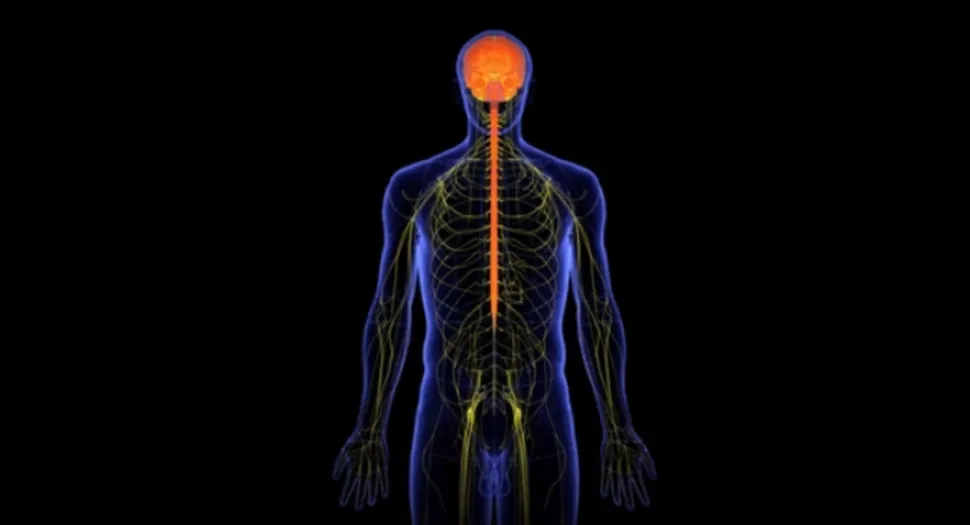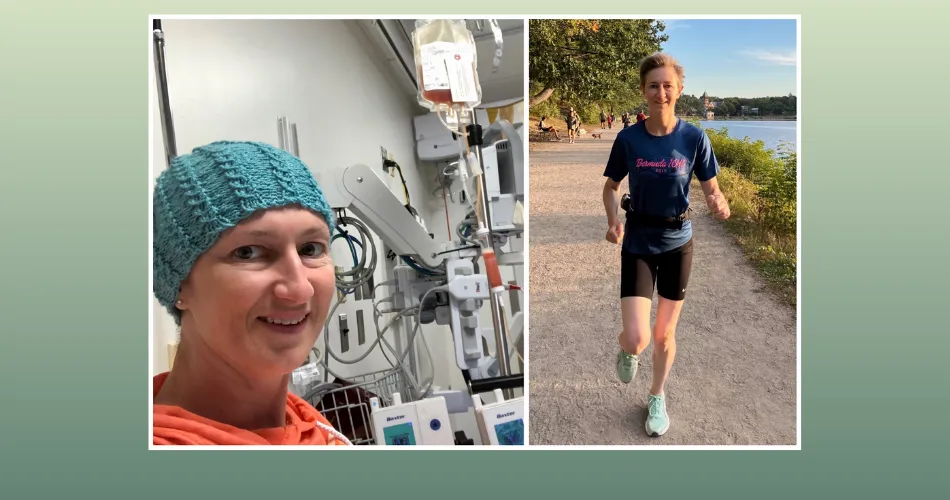Does AML Go to the Brain?

Acute myeloid leukemia (AML) is a type of cancer that starts in the bone marrow (the soft inner part of certain bones, where new blood cells are made) but most often quickly moves into the blood.
AML findings in the central nervous system are a rare complication of this type of cancer since it’s not a solid tumor type of cancer. But it’s possible that sometimes, AML spreads to other body parts outside the bone marrow or blood circulation.
The central nervous system, or CNS, comprises the brain and spinal cord. It controls involuntary and reflex movements and more abstract functions like perceptions, emotions, and thoughts.
Who is more likely to have AML in the central nervous system?
Children with AML have a higher risk of having AML cells in the central nervous system so they undergo regular testing that looks for involvement in the brain and nervous system. Adult patients who have relapsed are more likely to develop AML in the brain and central nervous system, and they may get tested after relapse.
How can AML be detected in the CNS?
The cerebrospinal fluid transports nutrients throughout the central nervous system. It has a blood-brain barrier, meaning that the cerebrospinal fluid's microenvironment and is protected from the rest of the body’s circulation. That’s why when doctors look for irregularities in the central nervous system, they perform a lumbar puncture, a procedure that extracts cerebrospinal fluid from a patient without the need to undergo surgical procedures or biopsy nervous tissue directly. By analyzing the cells from the cerebrospinal fluid, doctors can determine whether there are AML cells, infections, proteins, or other disease indicators.
Imaging studies, especially MRI, help identify the location or extension of the cells and allow doctors to decide on the best treatment.
What symptoms can a patient experience when AML spreads to the central nervous system?
The symptoms depend on the concentration of AML cells and the part of the nervous system affected. Sometimes, it doesn’t show any symptoms, which is why the most vulnerable populations, like children with AML diagnosis, are routinely tested.
The most common symptoms that can indicate the presence of AML cells in the brain or spinal cord are:
- Headaches
- Mood swings
- Loss of balance
- Cramping or tingling sensations
- Numbness
- Fainting
- Seizures
- Vomiting or nausea
- Eyesight problems like double vision
- If the facial nerves are affected, hearing, swallowing, or moving the face can be impaired.
- Weakness of limbs
- Loss of bowel or bladder control
- Back pain
How long will I live if I have AML in the CNS?
The prognosis depends on when the leukemia cells start to invade the CNS. As a reference, AML patients with no CNS involvement live an average of 16.2 months, and the treatment goal is diminishing the AML cells in all cases.
- 5.4 months in patients with CNS disease is present at diagnosis
- 16.9 months in patients with CNS disease after diagnosis
How is AML in the CNS treated?
Since cerebrospinal fluid has a different circulation than the blood, intrathecal chemotherapy can be an option for patients with AML with brain or spinal cord metastases. Intrathecal refers to administering chemotherapy directly into the cerebrospinal fluid through a lumbar puncture.
CNS involvement in AML is a rare event, and there is very little clinical documentation. A large retrospective study concluded that patients with CNS involvement do not have worse overall survival compared with patients with extra-medullar disease or those without extra-medullar disease.
Some institutions offer intrathecal chemotherapy as a prevention for patients only with a prior history or high risk of CNS disease, and others for all patients. In other cases, directed radiation therapy can often be beneficial, particularly for patients who have been refractory to chemotherapy.
Accelerate the discovery of new treatment options by connecting records to HealthTree Cure Hub, an innovation that powers life-saving research!
If you are interested in participating in or finding a clinical trial, locating an AML specialist, or staying informed about updates on AML with a biweekly newsletter, you can create a free HealthTree Cure Hub account!
Sources:
- Acute Myeloid Leukemia With Central Nervous System Involvement Following Routine Surgical Procedures: A Bridge Between Surgical, Medical, and Neurological Critical Care
- Acute myeloid leukemia and the central nervous system
- Central nervous system involvement in patients with acute myeloid leukemia
Acute myeloid leukemia (AML) is a type of cancer that starts in the bone marrow (the soft inner part of certain bones, where new blood cells are made) but most often quickly moves into the blood.
AML findings in the central nervous system are a rare complication of this type of cancer since it’s not a solid tumor type of cancer. But it’s possible that sometimes, AML spreads to other body parts outside the bone marrow or blood circulation.
The central nervous system, or CNS, comprises the brain and spinal cord. It controls involuntary and reflex movements and more abstract functions like perceptions, emotions, and thoughts.
Who is more likely to have AML in the central nervous system?
Children with AML have a higher risk of having AML cells in the central nervous system so they undergo regular testing that looks for involvement in the brain and nervous system. Adult patients who have relapsed are more likely to develop AML in the brain and central nervous system, and they may get tested after relapse.
How can AML be detected in the CNS?
The cerebrospinal fluid transports nutrients throughout the central nervous system. It has a blood-brain barrier, meaning that the cerebrospinal fluid's microenvironment and is protected from the rest of the body’s circulation. That’s why when doctors look for irregularities in the central nervous system, they perform a lumbar puncture, a procedure that extracts cerebrospinal fluid from a patient without the need to undergo surgical procedures or biopsy nervous tissue directly. By analyzing the cells from the cerebrospinal fluid, doctors can determine whether there are AML cells, infections, proteins, or other disease indicators.
Imaging studies, especially MRI, help identify the location or extension of the cells and allow doctors to decide on the best treatment.
What symptoms can a patient experience when AML spreads to the central nervous system?
The symptoms depend on the concentration of AML cells and the part of the nervous system affected. Sometimes, it doesn’t show any symptoms, which is why the most vulnerable populations, like children with AML diagnosis, are routinely tested.
The most common symptoms that can indicate the presence of AML cells in the brain or spinal cord are:
- Headaches
- Mood swings
- Loss of balance
- Cramping or tingling sensations
- Numbness
- Fainting
- Seizures
- Vomiting or nausea
- Eyesight problems like double vision
- If the facial nerves are affected, hearing, swallowing, or moving the face can be impaired.
- Weakness of limbs
- Loss of bowel or bladder control
- Back pain
How long will I live if I have AML in the CNS?
The prognosis depends on when the leukemia cells start to invade the CNS. As a reference, AML patients with no CNS involvement live an average of 16.2 months, and the treatment goal is diminishing the AML cells in all cases.
- 5.4 months in patients with CNS disease is present at diagnosis
- 16.9 months in patients with CNS disease after diagnosis
How is AML in the CNS treated?
Since cerebrospinal fluid has a different circulation than the blood, intrathecal chemotherapy can be an option for patients with AML with brain or spinal cord metastases. Intrathecal refers to administering chemotherapy directly into the cerebrospinal fluid through a lumbar puncture.
CNS involvement in AML is a rare event, and there is very little clinical documentation. A large retrospective study concluded that patients with CNS involvement do not have worse overall survival compared with patients with extra-medullar disease or those without extra-medullar disease.
Some institutions offer intrathecal chemotherapy as a prevention for patients only with a prior history or high risk of CNS disease, and others for all patients. In other cases, directed radiation therapy can often be beneficial, particularly for patients who have been refractory to chemotherapy.
Accelerate the discovery of new treatment options by connecting records to HealthTree Cure Hub, an innovation that powers life-saving research!
If you are interested in participating in or finding a clinical trial, locating an AML specialist, or staying informed about updates on AML with a biweekly newsletter, you can create a free HealthTree Cure Hub account!
Sources:
- Acute Myeloid Leukemia With Central Nervous System Involvement Following Routine Surgical Procedures: A Bridge Between Surgical, Medical, and Neurological Critical Care
- Acute myeloid leukemia and the central nervous system
- Central nervous system involvement in patients with acute myeloid leukemia

about the author
Jimena Vicencio
Jimena is an International Medical Graduate and a member of the HealthTree Writing team. She has a passion for languages and is currently learning Japanese. In her free time, she loves playing with her cats. Jimena is also pursuing a bachelor's degree in journalism.
More on Core Education
Trending Articles

Get the Latest Acute Myeloid Leukemia Updates, Delivered to You.
By subscribing to the HealthTree newsletter, you'll receive the latest research, treatment updates, and expert insights to help you navigate your health.
Together we care.
Together we cure.
3x Faster.










